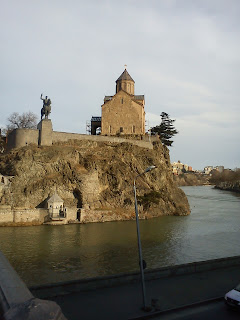Ecotourism, eco-accommodations and rural old/new destinations
Three preconditions for a rich
debate.
Motley problems and a
tentative solution.
Thus I would introduce the
interesting conference I attended last week, in Finale Ligure, in the nice and
quiet atmosphere of the Chiostri di Santa Caterina.
And let’s start from the
location. During its long history the complex of Santa Caterina changed its
use. First a religious complex with cloisters, a remarkable church and annexed
rooms and halls for monks, that a jail and – nowadays – a perfect location for
conferences, fairs, meetings, sided by a surprising museum and an exposition
centre. (See: https://www.tripadvisor.co.uk/Attraction_Review-g194761-d523778-Reviews-Museo_Archeologico_del_Finale_Convento_di_Santa_Caterina-Finale_Ligure_Italian_Riv.html)
In this beautiful location the Municipality of Finale Ligure -a small sea&sun tourist destination turned
into a European Capital of the Outodoor Sports- organized on the first day of Summer a conference
entitled “Ecotourism and small scale guest accommodation for the promotion of the territory
and the development of tourism in the agricultural-naturalistic areas”.
Three, as I said, the preconditions that make the proposed topic very sound and worthy to be discusses.
First of all: ecotourism is the fastest growing subsector of tourism. If tourism as a whole is growing at
the pace of more than 3% per year, outpacing the growth of global economy (2,5%), some forms of
tourism which are generally sub-grouped as eco-tourism/sustainable tourism, e.g. ciclotourism recorded
a growth of 30% in three years (2014-2016).
Second point: eco-tourism, sport tourists, tourism sportspeople need dedicated services. The slice of
market they represent is big enough to mandate strategical planning and dedicated assets. Among them,
accommodation. Eco-tourists and sportspeople on holiday require to be located in facilities that would
save them time to engage in their activities, which are consistent with their ethics and philosophy
of living and of traveling, and that are aesthetically satisfactory.
Last but not least: as we are aware we cannot deplete anymore our environmental and cultural assets,
we cannot lay (or pour in tons) concrete anymore. Building entire districts which become ghost towns
during the low season won’t make our destinations more competitive, nor more livable for residents.
Many other considerations should be added, but for the sake of brevity (this is just a post!) I’ll refer to
what the Municipality of Finale Ligure is planning to do, as explained by the Senior Planning Officer
Marinella Orso.
The proposal is a new law, to be drafted in cooperation with the Liguria Region – to re-qualify
old agrarian facilities and to increase the number of beds in the second-belt territory, which surrounds
the coast. The “second belt” hosts many path and trials used for recreation by sportspeople and tourists
(bikers, hikers, climbers, speleologists), but few hotels and accommodations - in the widest possible
term. The area bears the burden of the tourist flow, without enjoying much of its benefits.
The European Union encourages investment in rural areas, if they are meant to preserve the original use
of the territory, and the speakers provided good food for thoughts.
Silvia Scaramuzzi, Università di Firenze, focused on rural tourism, presenting interesting projects
developed in Tuscany, land of excellence for quality and eco-tourism in Italy, and often a forerunner
in the fields of sustainability&tourism.
Paolo Scoglio of The Nestliving (http://www.thenestliving.it/) proposed innovative and vanguard
solutions to maximize the enjoyment of the landscape and to wonderfully accommodate
the targeted groups.
Rauch Norbert of the Rubner Haus (http://www.haus.rubner.com/it/casa-in-legno/1-0.html ) presented
the company’s top standards eco-structures of wood, a perfect synthesis of technique, sustainability,
and design.
Domenico Ruffino provided a grass-root case of enterprise which is both economically viable,
and culturally relevant for the preservation of local bio-diversity and production.
A fascinating trip into an already present “next step” along the evolution of tourist reception.
The law is not on the paper yet, but there’s room to believe that once it’s there,
it won’t remain just there.


Commenti
Posta un commento